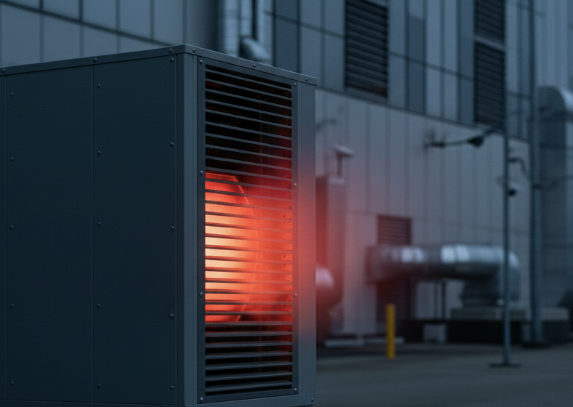
Wasted Power: Datacenter regulation in the EU
Articles
EU Energy Efficiency Directive
The EU is widely regarded as having the most comprehensive and ambitious energy regulation, in terms of scope, ambition, and legal enforceability. The EU Energy Efficiency Directive requires Member States to reduce energy consumption each year in order to meet the 2030 binding target:
EU-wide final energy consumption must not exceed 763 million tonnes of oil equivalent (Mtoe) by the end of the decade3.
The Directive sets out a clear framework for how countries must calculate their targets, report progress, and deliver energy savings. It also has mechanisms to correct underperformance in an attempt to ensure that the collective EU goal is achieved. If a Member State fails to comply by missing targets, failing to report data accurately, or not implementing required measures, the European Commission can launch infringement proceedings4. These can escalate to the Court of Justice of the EU (CJEU), which has the power to impose financial penalties until compliance is achieved. Persistent underperformance can also bring stricter corrective measures and reputational consequences within the EU, potentially affecting how that country is treated in funding or policy negotiations.
Crucially for data center, the EU has also made digital infrastructure part of its wider climate agenda. In its Digital Decade strategy5, the Commission set the goal that by 2030 data centers should be both climate-neutral and energy-efficient, with their excess energy actively recovered and reused. This political commitment underpins the more specific requirements introduced in Article 12 of the Directive.
Article 12 - Data centers
In October 2023, to keep up with rapid changes in the energy consumption landscape, Article 12 of the Energy Efficiency Directive introduced new obligations for data centers6. Specifically, all data centers with an installed IT power demand greater than 500 kW are now required to report operational data to a central EU database.
The required reporting includes:
- Annual electricity and fuel consumption
- Share of renewable energy used
- Power Usage Effectiveness (PUE)
- Cooling efficiency metrics (e.g. Water Usage Effectiveness, Energy Reuse Factor)
- Amount of waste heat recovered and reused
- Whether any recovered heat is exported to third parties
This reporting is mandatory and is intended to support transparency and benchmarking across the sector. The first reports were due on 30 September 2024.
Simply tracking data center energy use might seem tokenistic at first glance, but this regulation forces Member States to pay closer attention to how these data centers operate. And because they are legally bound to meet national energy consumption targets, several have already brought in their own laws and expectations to push for higher efficiency, particularly when it comes to reusing waste heat.
Germany
Germany has the second-largest data center market globally7 and the strongest regulations on waste heat reuse in Europe. Its Energy Efficiency Act (EnEfG)8 will require data centers with an installed IT capacity of ≥300 kW to reuse:
- 10% of their waste heat by July 2026,
- 15% by July 2027, and
- 20% by July 2028,
- or demonstrate an equivalent agreement to deliver that heat to a third party.
We are yet to see how effective these mandates will be and whether Germany will sufficiently enforce them. Especially since many data centers, especially those using liquid cooling or operating in areas without heat off‑takers, report struggling to find economically viable ways to reuse the low‑temperature waste heat they produce.
Nordic countries
Some countries don’t yet have explicit waste heat reuse rules, but they are increasingly tightening the regulations on data centers in other ways. Finland, for example, has considered removing a tax break for the sector9, which led to one Lapland project being cancelled after an expected 40-fold increase in its power tax bill. While this policy shift isn’t directly tied to waste heat, it stems from the broader energy and environmental challenges data centers pose. If operators could demonstrate better energy efficiency, the pendulum could swing back in favour of data center approval, as the smaller energy costs would be more easily outweighed by the economic benefits.
The Nordic countries have demonstrated that data center waste heat can be repurposed to heat homes in nearby towns10. In Finland and Sweden, this has largely been achieved through voluntary adoption, supported by extensive district heating networks and strong customer and market pressure. Denmark also has operational examples, though some projects have been slow to deliver on their heat reuse commitments. Heating homes is one of the most obvious uses for waste heat, but it requires the right piping infrastructure and proximity to a district heating network. This can be a major barrier as many data centers are built in rural locations to avoid local opposition over noise, water usage, and house prices, which makes supplying waste heat to urban heating networks difficult or even impossible.
Future predictions
Article 12 of the EU Energy Efficiency Directive entered into force in October 2023. As this is a recent development, many Member States are only now starting to adapt their national policies. In the coming years, it seems likely that more countries will introduce rules requiring waste heat reuse from data centers as part of their energy efficiency strategies.
Under Article 12, the European Commission must carry out a review in May 202511 to assess whether further measures are needed for data center energy efficiency. That review has not yet been published, but once it is, it could lead to stricter EU-wide requirements that all Member States would be legally obliged to follow.
References
¹ International Energy Agency (2023). Electricity 2023: Analysis and forecast to 2025. IEA, Paris. Available at: iea.org
2 Verne Global (2022). Data Center Waste Heat: Turning a Challenge into an Opportunity. Available at: verneglobal.com
3 European Union (2023). Directive (EU) 2023/1791 of the European Parliament and of the Council on energy efficiency. Available at: eur-lex.europa.eu
4 European Commission. Infringement procedure: ensuring the application of EU law. Available at: commission.europa.eu
5 European Commission (2021). Communication from the Commission … “Shaping Europe’s Digital Future” (COM/2021/118 final). Available at: eur-lex.europa.eu.
6 European Union (2023). Directive (EU) 2023/1791 of the European Parliament and of the Council of 13 September 2023 on energy efficiency (OJ L 231, 20.9.2023, p. 1–83). Available at: eur-lex.europa.eu
7 Cloudscene. Data Centers in Germany. Available at: cloudscene.com
8 Government of Germany (2023). Energy Efficiency Act (EnEfG). Available at: climate-laws.org
9 Bloomberg Tax (2025). Finland to Ax Electricity Tax Subsidy for Data Centers, Mines. Available at: news.bloombergtax.com
10 Yuan, M., et al. (2025). Renewable energy and waste heat recovery in district heating systems in China: A systematic review. Renewable and Sustainable Energy Reviews, Volume 196, 114390. Available at: sciencedirect.com
11 European Union (2023). Directive (EU) 2023/1791 of the European Parliament and of the Council of 13 September 2023 on energy efficiency, Article 12: Data Center Reporting. Available at: eur-lex.europa.eu



